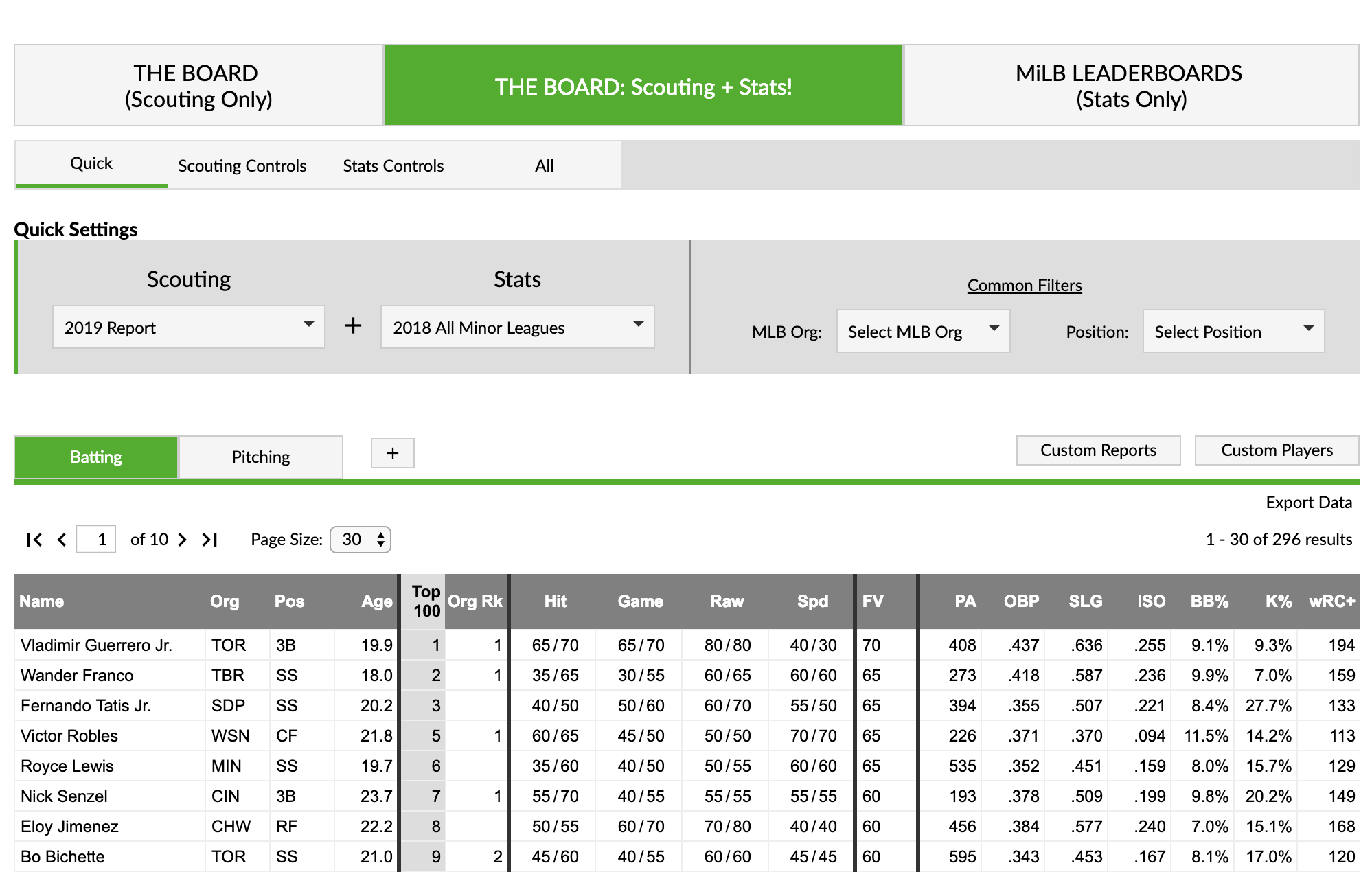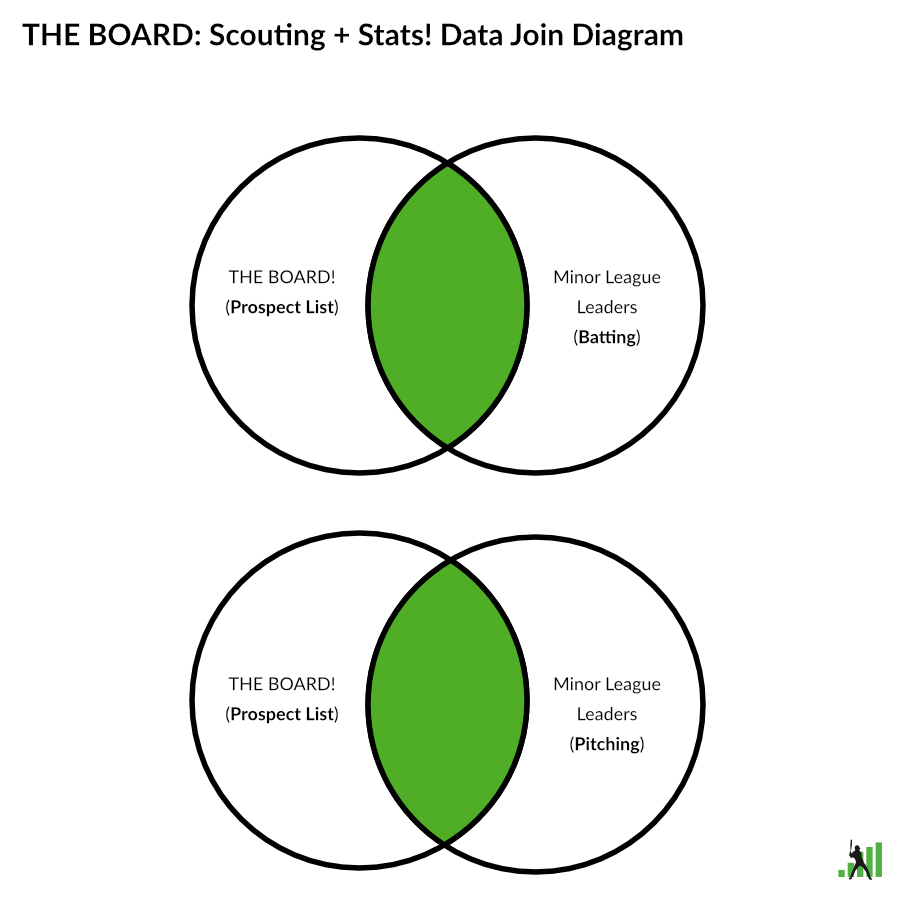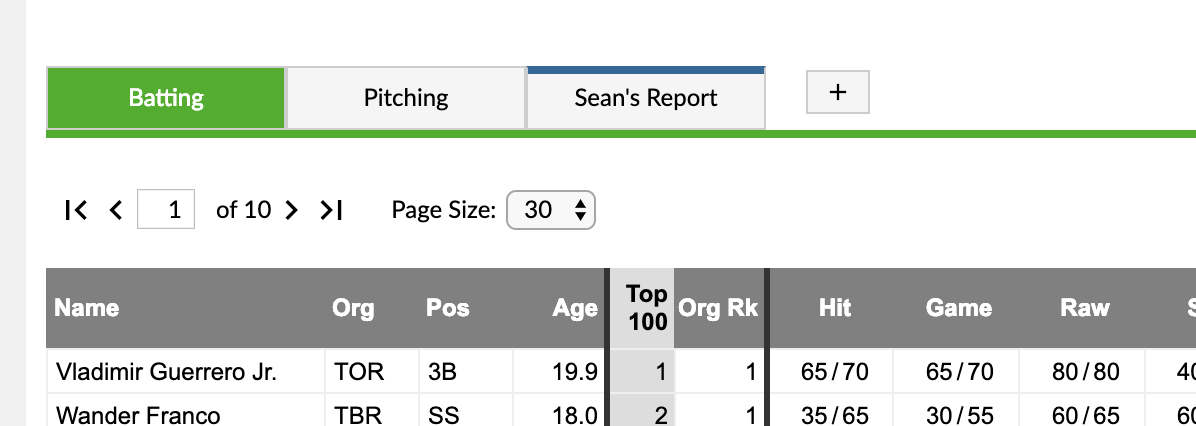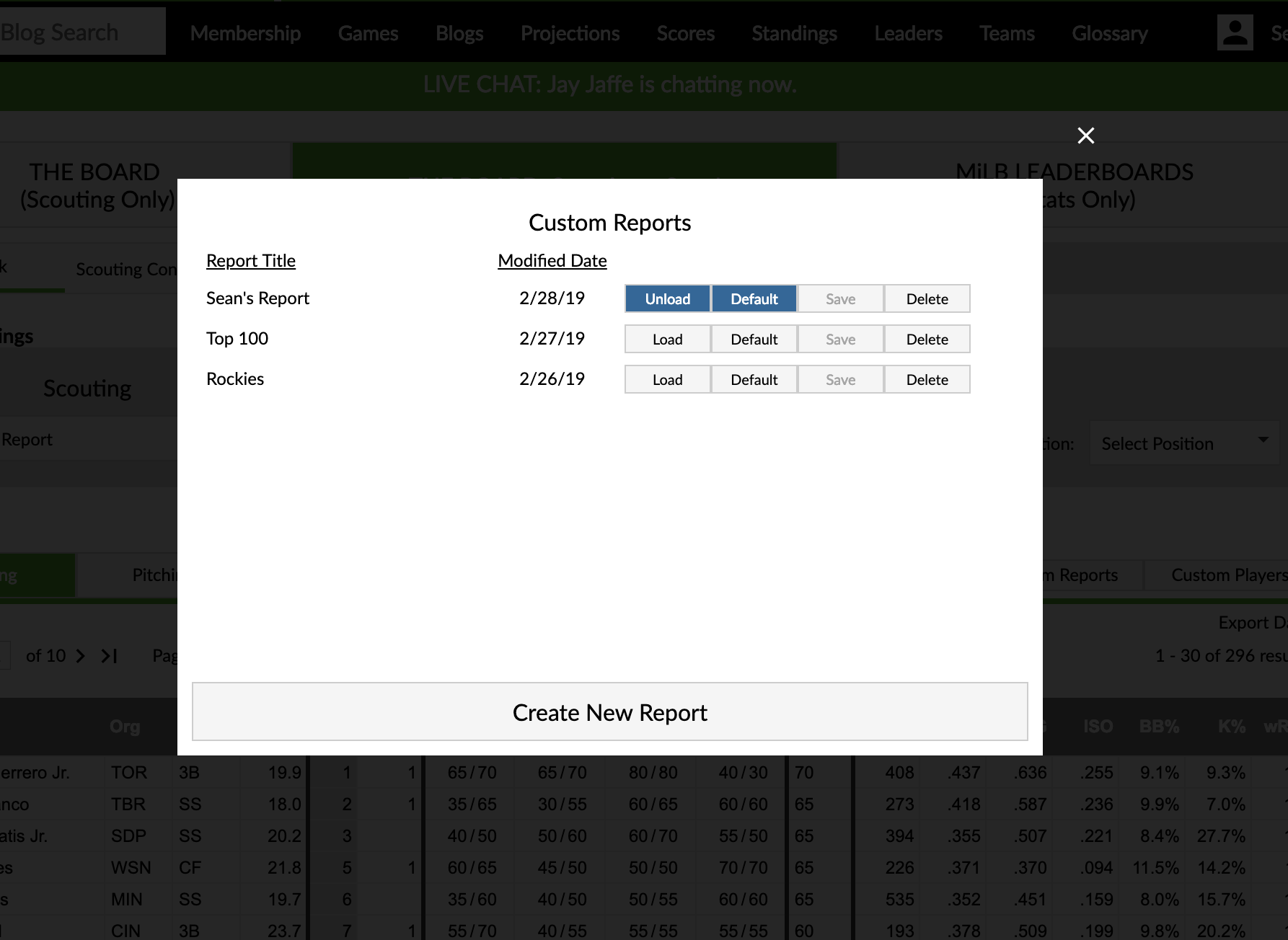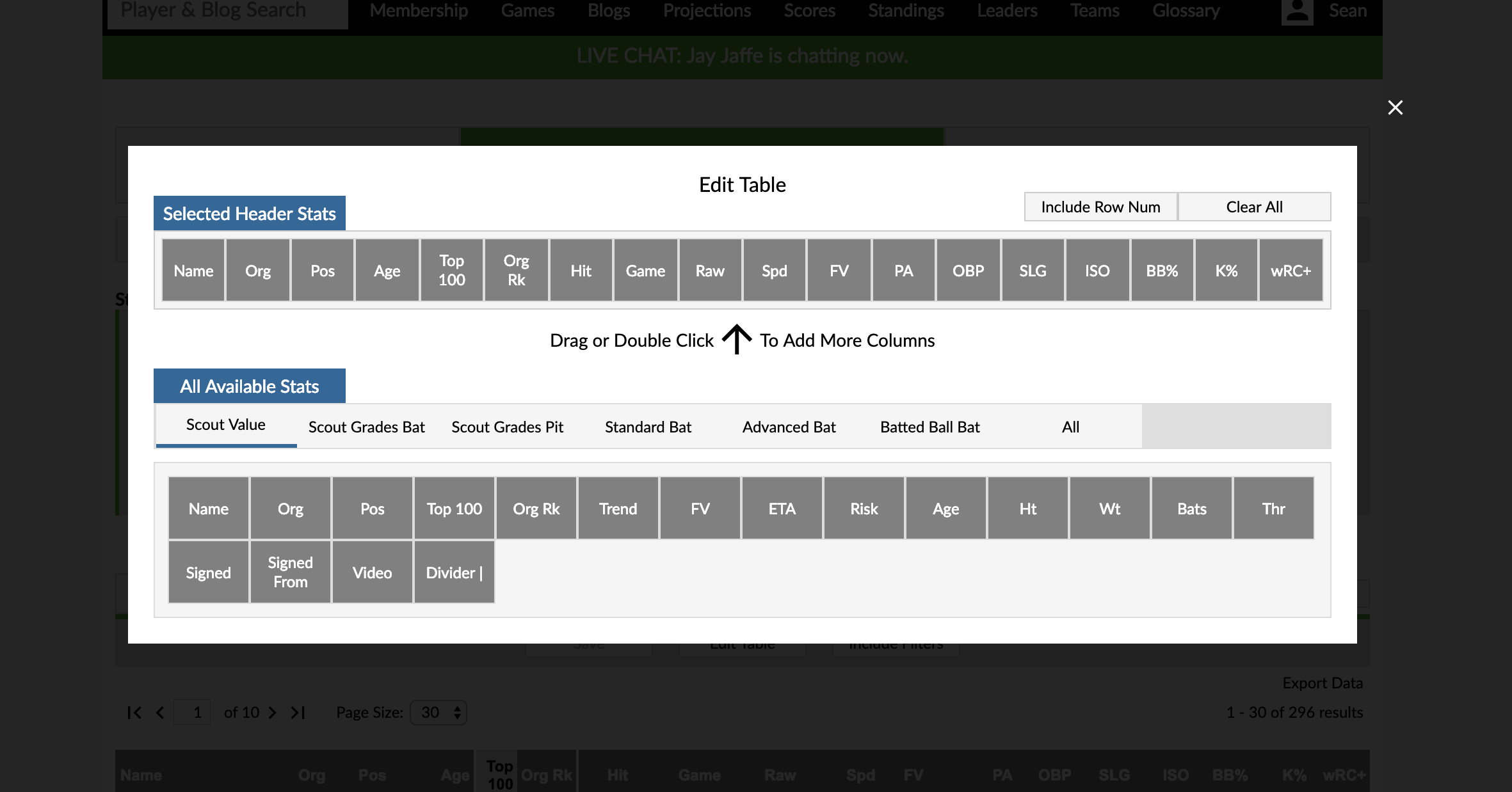For a player whom the Yankees acquired from the Twins in exchange for a backup catcher who hasn’t posted a positive WAR since the deal, Aaron Hicks was already quite a steal. Now the team has inked the 29-year-old switch-hitting center fielder to a very club-friendly seven-year, $70 million extension. It’s the second extension they’ve handed out this month, after Luis Severino’s four-year, $40 million deal, and likely won’t be the last, as the team is reportedly working on extensions for Dellin Betances and Didi Gregorius as well
The Severino extension has the same average annual value as Hicks’, but the two situations are rather different. Severino’s deal buys out just one year of potential free agency for a just-turned-25-year-old Super Two pitcher. While his career has had its ups and downs — including a detour to the minors in 2016 after a tantalizing 2015 debut, as well as a two-month slump last year that featured a 6.83 ERA, a 4.99 FIP, and concerns about pitch-tipping that carried into the postseason — we’re still talking about a pitcher who ranked fifth in the majors in WAR over the past two seasons while making a pair of All-Star teams and receiving Cy Young votes in both years, with a third-place finish in 2017. He may well win the award before his new contract lapses.
Hicks, who could have become a free agent after this season, isn’t nearly as accomplished, in that he’s never made an All-Star team, and has a single 10th-place AL MVP vote to his name. Indeed, he’s something of a late bloomer, having taken until his age-28 season (last year) to qualify for a batting title, though it’s not as though his talent was unexpected. The 14th pick of the 2008 draft out of Woodrow Wilson High School in Long Beach, California, he made four appearances on Baseball America’s Top 100 Prospects lists from 2009-2013, ranking as high as no. 19 (2010). While I could spend a thousand words explaining how the Twins botched his development, Baseball Prospectus editor-in-chief Aaron Gleeman, who has covered the team since the days when blogs were a novelty, offered a succinct summary in less than 280 characters:
In 928 plate appearances spread from 2013-2015, Hicks hit just .225/.306/.349 for an 81 wRC+, though above-average (and occasionally spectacular) defense pushed his WAR in that span to 2.5. But with top prospect Byron Buxton waiting to be similarly screwed up in the wings, Ryan sold very low on Hicks, trading him straight up for catcher John Ryan Murphy, a former second-round pick who through his age-24 season had shown promise on both sides of the ball, if not at a level that lands one on the upper reaches of prospect lists. Long story short, Ryan started his Twins career going 3-for-40 as a backup behind Kurt Suzuki, and never really had a chance in the organization before being dealt to the Diamondbacks in July 2017.
Though Yankees general manager Brian Cashman loved his athleticism, Hicks did not pan out immediately. Amid three trips to the injured list (once for each hamstring, and once for his right shoulder), he hit just .217/.281/.336 (64 wRC+, -0.1 WAR) in 361 PA as a fourth outfielder behind Brett Gardner, Jacoby Ellsbury, and Carlos Beltran in 2016, a step backwards from his modest but solid 2015 (96 wRC+, 2.0 WAR). He finally broke out in 2017 (.266/.372/.475, 15 homers, 10 SB, 3.3 WAR) despite oblique strains on both sides that limited him to 88 games. An intercostal strain sidelined him early in 2018, but he recovered to put together his best season yet, batting .248/.366/.467 with 27 homers, 11 steals, a 127 wRC+ and 4.9 WAR, the Yankee lineup’s second-highest WAR total behind Aaron Judge (5.0).
Hicks’ extension will pay him $10.5 million per year from 2020-2023, then $9.5 million in 2024-2025, with a $12.5 million club option and a $1 million buyout for 2026, his age-36 season. The deal incorporates the $6 million salary he and the Yankees had already hammered out for this year, sweetening the pot with a $2 million signing bonus.
That doesn’t change things all that much, but it makes it easier for apples-to-apples comparisons with the last two free agent center fielders to ink big contracts, namely Lorenzo Cain (five years, $80 million from the Brewers last winter) and A.J. Pollock (four years, $55 million from the Dodgers in January). Both were a bit older and more accomplished when they reached free agency. Cain hit the market after his age-31 season, having already made an All-Star team, helped the Royals to back-to-back pennants (with a 2014 ALCS MVP award, a 2015 ALCS-winning mad dash home, and a championship in that same season), and reeled off four straight seasons of above-average production totaling 17.0 WAR. Pollock reached free agency after his age-30 season, having made one All-Star team and won one Gold Glove. Those were both back in his monster 6.8-WAR 2015 season; since then, a variety of injuries has limited him to 237 games and 5.2 WAR.
Pollock’s deal included all kinds of bells and whistles: a $12 million signing bonus; an opt-out after 2021, with a potential $5 million buyout based upon his PA totals; a $10 million player option — which also increases based upon his PA totals as well as placement in MVP voting — with a $5 million buyout; a $1.5 million assignment bonus if he’s traded; and (probably) an extra popsicle out of the freezer every weekend night. Leaving all of that aside to focus on the guaranteed money, here’s a side-by-side comparison with Hicks, using ZiPS projections supplied by Dan Szymborski:
Aaron Hicks vs. A.J. Pollock Age 31-35 Comparison
| Hicks |
|
Pollack |
| Age (Year) |
AVG |
OBP |
SLG |
OPS+ |
WAR |
Age (Year) |
WAR |
| 29 (2019) |
.253 |
.354 |
.459 |
116 |
3.2 |
|
|
| 30 (2020) |
.252 |
.353 |
.461 |
116 |
3.0 |
|
|
| 31 (2021) |
.251 |
.350 |
.451 |
113 |
2.7 |
31 (2019) |
2.7 |
| 32 (2022) |
.247 |
.346 |
.438 |
108 |
2.3 |
32 (2020) |
2.3 |
| 33 (2023) |
.244 |
.338 |
.414 |
100 |
1.8 |
33 (2021) |
1.9 |
| 34 (2024) |
.238 |
.326 |
.388 |
90 |
1.1 |
34 (2022) |
1.3 |
| 35 (2025) |
.231 |
.313 |
.357 |
79 |
0.4 |
35 (2023) |
0.8 |
| Total |
|
|
|
|
14.4 |
|
8.9 |
| Ages 31-35 |
|
|
|
|
8.3 |
|
8.9 |
WAR-wise, the two players are just over half a win apart when it comes to their 31-to-35 projections; for that period, Hicks is guaranteed $50.5 million to Pollock’s $55 million, though the latter could reach $65 million if he maxes out his incentives with 600 PA in 2022 (a level he reached only in 2015), and go even higher if he finishes in the top 10 of the MVP voting in any of those four years (something he’s never done). Even before factoring inflation, Hicks is taking a discount relative to that guaranteed money, but again, he’s less accomplished in the traditional sense, even if he’s been the more valuable one over the past two or three seasons.
As with Severino’s extension (and most deals struck prior to a player reaching free agency), there’s a decent chance that Hicks has sold himself short. Then again, the past two winters’ trips through free agency haven’t been much fun for many players, and there’s also a chance Hicks might not merit a starting job by the middle of this deal, and thus be the kind of fourth outfielder who only a big-spending team like the Yankees — who are paying Gardner $7.5 million for a year in which he might wind up in that role, and have paid Ellsbury $42 million for the past two seasons, one of them a complete washout — can afford. If Mike Trout absolutely demands to wear pinstripes after the 2020 season, while Judge and Giancarlo Stanton are under contract, Hicks’ salary won’t be a huge impediment.
Seventy million dollars of guaranteed money isn’t nothing. For a player whose major league career seemed to take forever to get off the ground, and who, after one more good season before hitting the market, might at best have netted the same dollar amount but compressed into a shorter time period (say, five years and $70 million as Cain Lite) and then been forced to scramble for scraps given the way the market is treating outfielders in their mid-30s, it’s a solid payday. If this is Hicks’ one bite of the (Big) Apple, he did all right.
